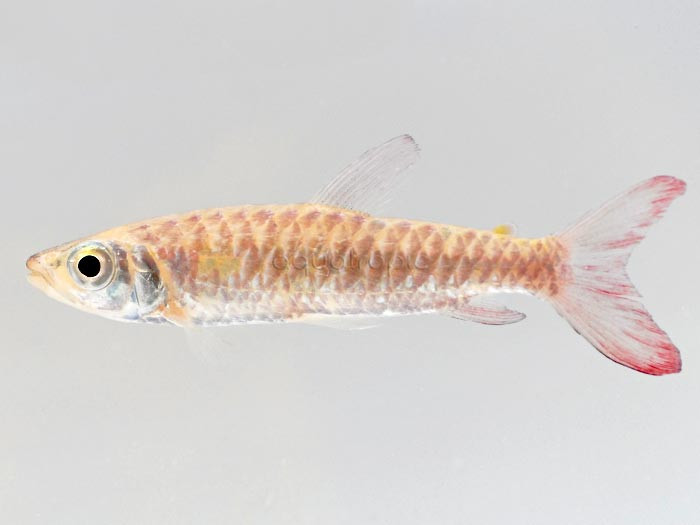Pink Tail Chalceus (Chalceus macrolepidotus)

The thick-bodied fishes known as Chalceus are a far cry from the delicately shaped tetras familiar to the aquarium hobby, but they are in fact both members of the same diverse family, Characidae. With their hydrodynamic body, streamlined like a piscine submarine, it's not hard to see how this genus is perfectly adapted for an active predatory lifestyle. In the wild, you’ll find them feasting upon all manner of unlucky invertebrates, quickly darting about to snatch prey. For this reason, these fishes are a great way to add a little excitement and movement to an aquarium.
Chalceus macrolepidotus has long been the most commonly seen member of its genus, easily recognized for its bright red tail and silvery body. It hails from the northern portions of South America, from Colombia to French Guiana, occurring in highly oxygenated river systems. In the home aquarium, this fish is typically undemanding, so long as enough room is provided for its energetic swimming needs and water parameters are kept appropriate.
While the Pink Tail Chalceus will accept dry foods, it is important to still offer a healthy mix of fresh and frozen options as well. Multiple specimens of this shoaling fish can be kept in larger aquariums, but it is rare for it to be successfully bred in captivity. However, in smaller groups, there can often be issues with aggression, with nipped fins and cowering individuals—single specimens will do fine and our appropriate for tanks under 100 gallons.
Possible tankmates could includes some of the larger tetras of South America, such as Silver Dollars of Buenos Aires Tetras. Other good options are Leporinus, most cichlids and many of the catfishes native to these waters. Outside the region, barbs and rainbowfishes would work quite well. In general, avoid groups that are bothered by the active swimming of a Chalceus (e.g. discus, angelfish) or smaller fishes that might end up on the menu.